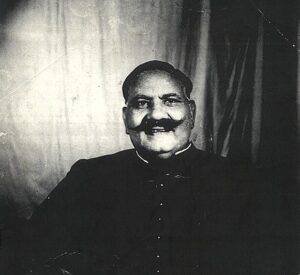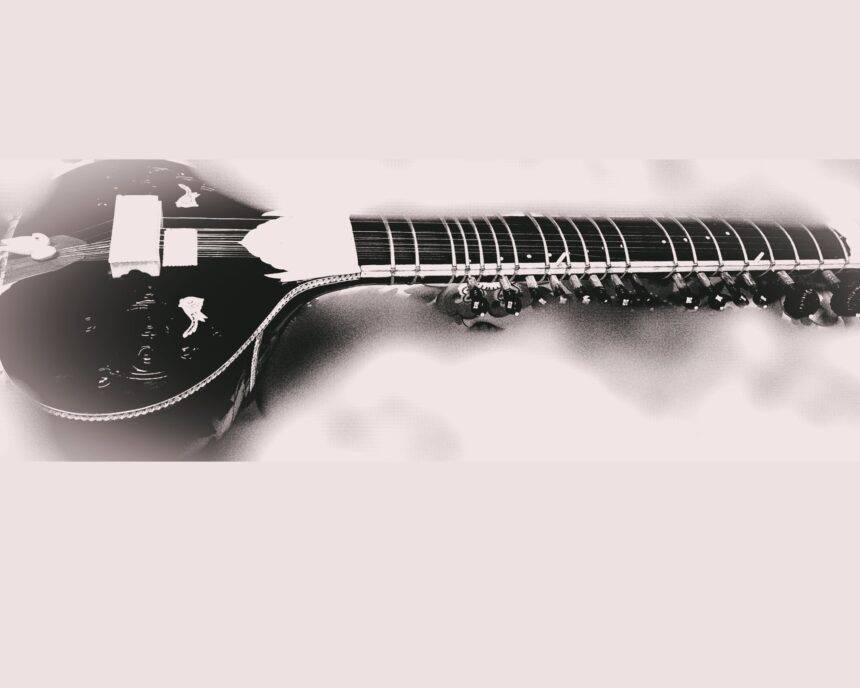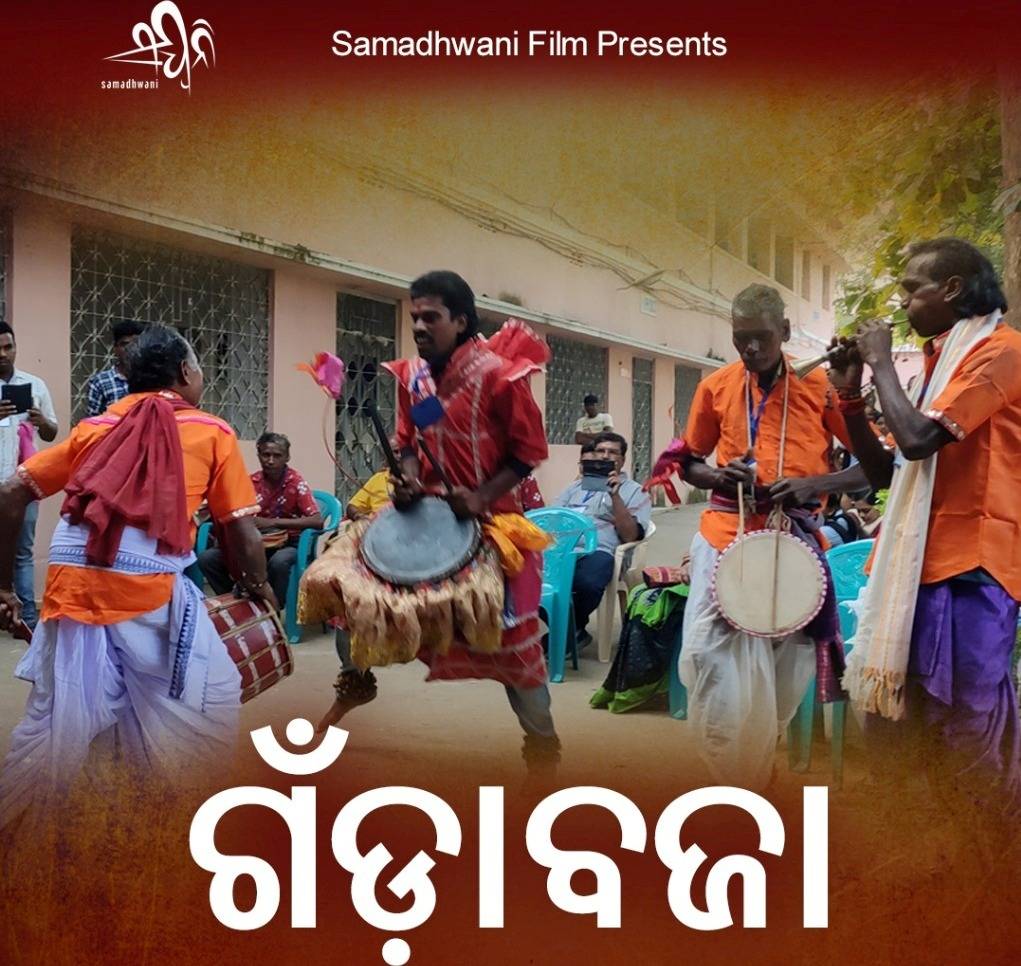Every artist, regardless of their background, begins their journey in Indian Classical music with a deep-rooted connection to their family and the nurturing guidance of a guru. This familial and traditional lineage provides them with a strong foundation and a rich musical heritage to build upon. They are immersed in the teachings of their gharana, learning the intricacies of ragas, talas, improvisation, and the nuanced techniques that define the genre. However, within this structured and organized system of learning, there are numerous instances where artists find themselves inspired by sources that extend beyond their gharana or lineage. This inspiration can come from various quarters and take diverse forms. It may be direct, stemming from interactions with other musicians, attending concerts, or studying recordings of maestros from different gharanas. It can also be indirect, arising from exposure to different genres of music, encounters with other art forms, or personal experiences that spark a creative flame within them. The influence of this inspiration is transformative. It shapes the artist’s music distinctly, adding layers of depth and individuality to their expression. It introduces new melodies, improvisational approaches, rhythmic patterns, or tonal nuances that expand their artistic vocabulary. The infusion of diverse influences allows them to bring a unique blend of styles, techniques, and interpretations to their performances, creating a fusion that enriches the tradition while maintaining its core essence. Every artist, when reflecting on their musical journey, readily acknowledges the profound impact of those who have inspired them. They may speak of the musicians who have mentored them outside their gharana, the artists whose performances have left an indelible mark, or the innovative creators who have pushed the boundaries of tradition. The acknowledgment of these sources of inspiration serves as a testament to the artist’s humility, gratitude, and recognition that their artistry is a product of collective influences and creative exchange.
Inspiration is the process of being deeply moved or influenced by musical elements, ideas, emotions, or experiences. It is the spark that ignites creativity and drives musicians to compose, perform, or explore new musical territories. Musical inspiration is a deeply personal and subjective experience. It can be sparked by a multitude of factors, and its impact on each individual musician varies. Embracing and cultivating inspiration in music can fuel creativity, nurture growth, and contribute to the development of a unique musical identity. Musical inspiration can manifest in various forms. Hearing a beautiful or thought-provoking melody can evoke strong emotions and spark ideas for new musical creations. Witnessing a captivating live performance can be a profound source of inspiration. The energy, skill, and creativity displayed by other musicians can motivate artists to enhance their own performances or explore different ways of engaging with their audience. Exploring different musical traditions, genres, or historical periods can inspire musicians to incorporate elements from those traditions into their own work. Drawing inspiration from diverse musical cultures can result in unique blends and fusions that expand musical horizons. Inspiration in music often comes from pushing boundaries, experimenting with new sounds, and challenging established conventions. Exploring unconventional instruments, unique production techniques, or blending genres can lead to groundbreaking musical discoveries.

Ustad Faiyaz Khan
In the world of sitar music, musicians frequently express their deep appreciation for the inspiration they receive from other sitar players and vocal maestros who have left a lasting impact on their musical journey. These sources of inspiration play a significant role in shaping their artistic development and enriching their approach to sitar playing. Sitar musicians often look up to and draw inspiration from the virtuosos of their instruments, both past and present. They study the techniques, styles, and unique approaches of renowned sitar players, recognizing their contributions to the evolution of the instrument and the broader realm of Indian classical music. By immersing themselves in the recordings, performances, and compositions of these maestros, sitar players gain insights into intricate ornamentations, innovative improvisation methods, and the distinctive tonal qualities that define the sitar. Additionally, vocal maestros such as Ustad Bade Ghulam Ali Khan, Ustad Faiyaz Khan, and Many more hold a special place of inspiration for sitar musicians. The human voice, with its ability to convey a vast range of emotions, melodic nuances, and intricate ornamentations, serves as a constant source of admiration and learning. Sitar players often seek to emulate the vocal style and expressions of accomplished singers, translating the essence of vocal music onto their instruments. They strive to replicate the intricacies of vocal phrasing, the depth of emotional expression, and the fluidity of melodic embellishments, bringing a unique melodic and lyrical quality to their sitar performances. The inspiration derived from other sitar players and vocal maestros goes beyond mere emulation. Sitar musicians absorb and internalize these influences, incorporating them into their own musical vocabulary and developing their distinctive artistic voice. They assimilate the techniques, nuances, and creative approaches of their inspirations, blending them with their unique interpretations, experiences, and personal expressions. This synthesis allows them to create music that not only pays homage to their inspirations but also reflects their own musical identity and individuality.

Ustad Bade Ghulam Ali Khan
Musical inspiration is a deeply personal and subjective experience. It can be sparked by a multitude of factors, and its impact on each individual musician varies. Embracing and cultivating inspiration in music can fuel creativity, nurture growth, and contribute to the development of a unique musical identity. Inspiration is subjective because it is deeply personal and varies from person to person. What inspires one musician may not necessarily have the same effect on another. Different individuals have unique preferences, musical tastes, and life experiences that shape their perception and response to various musical elements. Something that resonates profoundly with one musician may not evoke the same level of inspiration in someone else. This subjectivity is what makes music diverse and allows for a rich tapestry of artistic expression. The individual identity of a musician is an amalgamation of their unique personality, experiences, influences, and creative choices. It is the distinct fingerprint that sets them apart from others. Every musician brings their own set of skills, perspectives, and artistic vision to their music, which shapes their creative output and helps them carve out a unique identity. This individual identity is manifested in the way they compose, perform, interpret, and connect with their audience. The subjectivity of inspiration plays a vital role in the formation of an individual’s musical identity. Musicians draw inspiration from a wide range of sources, including their musical influences, cultural background, personal experiences, and emotions. These sources of inspiration help shape their creative direction and stylistic choices. As musicians explore their inspirations and experiment with different musical elements, they develop their own distinct sound, artistic voice, and musical identity. An artist’s identity in music is an ongoing process of self-discovery and evolution. It is a reflection of their growth, exploration, and willingness to push boundaries. As musicians continue to draw inspiration from various sources and engage in artistic self-expression, their individual identity in music becomes more defined and recognizable.
In the world of Indian classical music, the relationship between a musician and their guru is revered and fundamental. The guru plays a crucial role in shaping the artistic journey of a musician, imparting knowledge, technique, and musical wisdom. However, as Indian classical musicians progress in their careers, they often seek inspiration that goes beyond the teachings of their gurus. This exploration of diverse influences outside the traditional confines allows for artistic growth, innovation, and the evolution of their musical expression. While the teachings of gurus form the foundation of a musician’s training, the pursuit of inspiration beyond their gurus is a natural progression and a testament to the ever-evolving nature of Indian classical music. Musicians are driven by a desire to explore beyond the boundaries of their gharana (musical lineage) and to incorporate various influences into their music.








